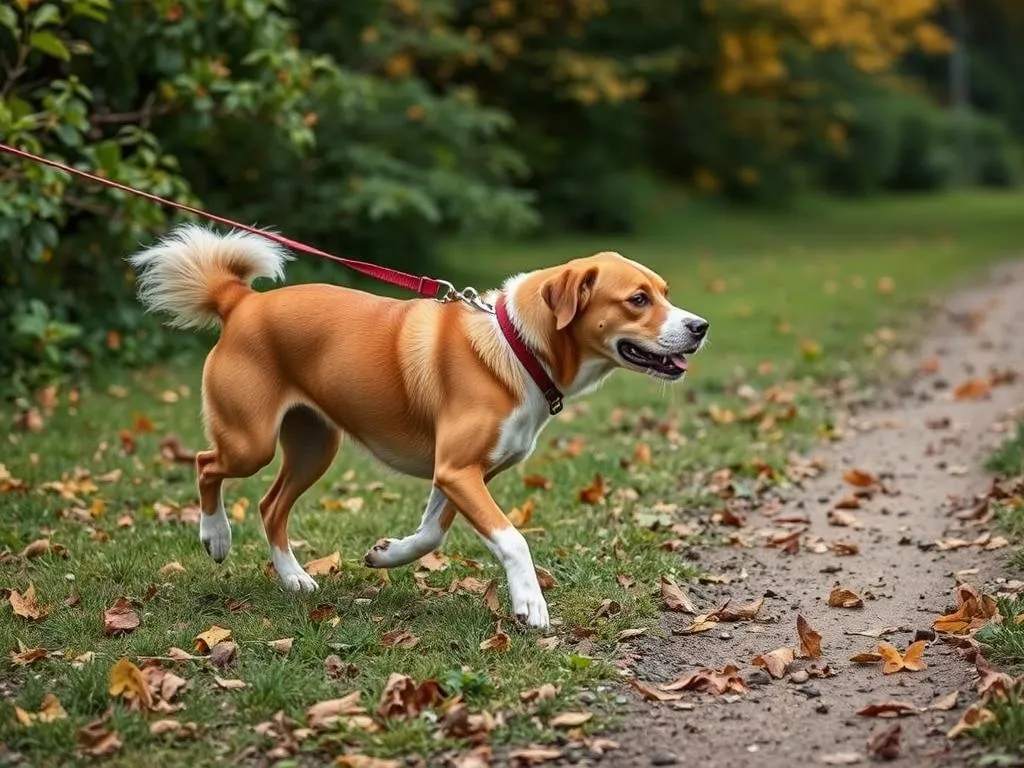
Introduction
As a dog owner, you undoubtedly cherish your furry companion and want to ensure their safety at all times. One of the most nerve-wracking scenarios you might face is when an off-leash dog approaches your leashed dog. Knowing what to do when an off-leash dog approaches your leashed dog can make a significant difference in ensuring a safe and calm encounter.
Statistics reveal that dog-related incidents are more common than many might think. According to a study conducted by the American Veterinary Medical Association, approximately 4.5 million dog bites occur in the United States each year, with a sizable portion stemming from encounters between leashed and off-leash dogs. In many cases, these incidents lead to injuries, stress, and even legal ramifications.
In this article, you will learn about dog behavior, the risks involved, how to prepare for such encounters, immediate actions to take, de-escalation techniques, and preventative measures to minimize these situations in the future.
Understanding Dog Behavior
The Nature of Dog Interactions
Understanding dog behavior is essential when you find yourself in a situation where an off-leash dog approaches your leashed dog. Dogs communicate through various body language signals that can indicate their intentions.
-
Playful vs. Aggressive Behavior: Some dogs approach with a wagging tail and playful demeanor, while others may exhibit stiff body language, raised hackles, or growling. Recognizing these signs can help you gauge whether the approaching dog is friendly or poses a threat.
-
Body Language to Look For: Look for signals like relaxed ears and a wagging tail for friendly dogs, while a dog with tense posture, direct staring, or a low growl may be indicating aggression.
The Risks Involved
It’s crucial to acknowledge the risks involved when an off-leash dog approaches your leashed dog.
-
Potential Risks: The interaction could lead to fear, which may provoke aggressive responses from either dog. Your leashed dog may feel trapped and react defensively, resulting in bites or injuries.
-
Escalation Scenarios: If the off-leash dog is aggressive or overly excited, it could provoke a fight or lead to a stressful experience for both dogs. Knowing how to navigate these risks can help prevent unfortunate outcomes.
Preparing for Encounters
Training Your Dog
Preparation is key to ensuring a safe experience when encountering off-leash dogs.
-
Importance of Obedience Training: Training your dog to respond to basic commands can significantly mitigate risks. Commands like “sit,” “stay,” and “leave it” can help regain control over the situation.
-
Basic Commands for Safety: Teaching your dog to focus on you when distractions arise is vital. Regular training sessions can reinforce these commands, ensuring your dog remains calm and obedient in stressful situations.
Equipment Choices
The right equipment can make a considerable difference in keeping your dog safe.
-
Leashes and Harnesses: Opt for a sturdy, non-retractable leash that allows for better control. A harness can offer more security and prevent your dog from slipping out if panic ensues.
-
Calming Tools: Consider using calming tools like anxiety wraps or pheromone sprays that can help soothe your dog’s nerves during encounters with off-leash dogs.
Immediate Actions to Take
Assess the Situation
When an off-leash dog approaches, your first step is to assess the situation.
-
Evaluate the Approaching Dog’s Behavior: Observe the dog’s body language. Is it wagging its tail, or does it appear tense? Understanding the dog’s demeanor will help you determine the best course of action.
-
Owner Presence: Check if the dog has an owner nearby. If they are present, their response will play a crucial role in the encounter.
Protecting Your Dog
Prioritizing your dog’s safety is paramount.
-
Positioning Yourself: If the off-leash dog seems aggressive, position yourself between it and your leashed dog. This physical barrier can help protect your pet while you assess the situation.
-
Leash Control: Keep your dog close and secure. If necessary, use the leash to guide your dog away from the approaching dog, maintaining control throughout the encounter.
Communicating with the Other Dog’s Owner
If the off-leash dog has an owner nearby, communication is essential.
-
Staying Calm and Assertive: Approach the situation calmly, as this will help prevent further agitation in both dogs.
-
Suggested Phrases: Use clear and assertive phrases like, “Please call your dog back,” or “My dog is on a leash; can you control yours?” This sets a respectful tone while emphasizing the need for action.
De-escalation Techniques
Distracting the Off-Leash Dog
If an off-leash dog approaches, distraction can be an effective strategy.
-
Techniques for Diverting Attention: Use toys, treats, or even your own voice to redirect the dog’s focus. Tossing a toy away can encourage the dog to chase it, giving you time to move your dog to safety.
-
Using Your Voice: A firm but calm voice can help divert the dog’s attention. Phrases like “Sit!” or “Stay!” can be effective if the dog is familiar with basic commands.
Creating Distance
Creating distance between your dog and the off-leash dog can prevent escalation.
-
Moving Away Calmly: If you sense tension, calmly back away with your dog. Avoid sudden movements that could startle either dog.
-
Safely Removing Your Dog: If possible, lead your dog away from the situation and seek a safe area. This can help reduce stress for both dogs and prevent potential conflict.
After the Encounter
Assessing Your Dog’s Reaction
Post-encounter, it’s essential to check on your dog’s emotional state.
-
Signs of Stress or Anxiety: Watch for signs like excessive panting, whining, or avoidance behaviors. These may indicate that your dog is feeling stressed or anxious after the encounter.
-
Calming Your Dog: Create a safe space for your dog at home where they can relax. Engage in calming activities such as gentle petting or offering their favorite toys.
Reporting the Incident
In some cases, it may be necessary to report the incident.
-
When to Report: If the off-leash dog exhibited aggressive behavior, consider discussing the encounter with local animal control or reporting it to authorities.
-
Understanding Leash Laws: Familiarize yourself with local leash laws and regulations to understand your rights and responsibilities as a dog owner.
Preventative Measures
Awareness in Public Spaces
Being vigilant can help you avoid potential risks in dog-friendly areas.
- Identifying Potential Risks: Stay aware of your surroundings, especially in parks or areas where dogs are frequently off-leash. Recognizing potential threats can help you react proactively.
Dog-Friendly Places
Choosing the right places to walk your dog can enhance safety.
-
Safe Areas to Walk: Look for designated dog parks or areas that enforce leash laws. These spaces are generally safer for leashed dogs and can help minimize encounters with off-leash dogs.
-
Engaging with Dog-Friendly Communities: Connecting with other dog owners through local events or groups can provide support and tips for navigating these situations.
Resources and Support
Training Classes
Investing in professional training can benefit both you and your dog.
- Local Resources for Dog Training: Research local dog training classes that focus on obedience and socialization. Professional trainers can provide valuable insights and techniques to improve your dog’s behavior.
Online Communities
Online platforms can offer additional support and resources.
- Suggestions for Online Forums: Engage with dog owner communities on social media or forums where you can share experiences, ask questions, and gain insights from others.
Conclusion
In summary, knowing what to do when an off-leash dog approaches your leashed dog is vital for ensuring the safety and well-being of your pet. Understanding dog behavior, preparing for encounters, and knowing immediate actions to take can significantly reduce risks.
By staying informed and proactive, you can foster a safer environment for your dog and enjoy your outings with peace of mind. Remember, responsible pet ownership and awareness of your surroundings are key to a positive experience for both you and your furry friend.









